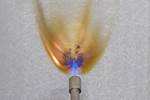Exel Composites white paper calls for grid modernization using HTLS conductor cores
Free white paper analyzes and quantifies the benefits of high-temperature, low-slag carbon fiber conductor cores which have the potential to bring aging grid infrastructure up to speed.
Source | Exel Composites
Global composites manufacturer Exel Composites (Vantaa, Finland) has released a new white paper to update the transmission and distribution industry on advances in technology. The pultrusion company draws on multiple reference cases with conductor manufacturers and transmission system operators (TSO) to show the opportunities that reconductoring existing power lines with carbon fiber cores brings to aging grids globally.
The white paper analyzes and quantifies the benefits of high-temperature, low-sag (HTLS) conductors against the condition of the world’s electrical transmission infrastructure. More than 40% of Europe’s grids are more than 40 years old, while more than 50% in North America exceed 30 years of age.
Heini Kloster and Antti Hassinen, the authors of the white paper, are the product manager for conductor cores and the senior manager for product management at Exel Composites, respectively. To help drive development and contribute to conversations around this grid-enhancing technology, the two are active members of organizations such as The International Council on Large Electric Systems (CIGRE) and the International Electrotechnical Commission (IEC).
“Replacing transmission line conductors with HTLS conductors, especially with composite cores, represents an opportunity to modernize the world’s electrical grids without the problems that face all countries,” explains Hassinen. “Namely, the great cost of building new infrastructure, the delays associated with planning and environmental permissions and the need to integrate decentralized renewable energy sources quickly.”
“We’re talking about doubling transmission capacity, in a fraction of the time required to build entirely new lines, with much less red tape,” emphasizes Kloster. “This white paper sets out the most compelling case that I’ve seen for the role of advanced conductors with composite cores in the vital upgrades to electrical infrastructure across the globe.”
In late 2024, Hassinen and one of the IEC Technical Committees (TC 7) published Technical Specification 62818-1, which provides a unified testing and qualification framework for composite conductor cores, independent of the structural design of the core. This gives TSO’s the ability to compare commercially available solutions on an even playing field, further encouraging uptake.
“We stand on the precipice of change,” concludes Hassinen. “TS 62818-1, developing technologies like multi-wire carbon fiber cores, rising demand for data centers and electric vehicles, and greater need to integrate renewable energy sources all point toward major attention for composite conductor cores in coming years.”
Download the free , and/or view Hassinen and Kloster’s webinar on conductor cores.
Related Content
-
JEC World 2024 highlights: Thermoplastic composites, CMC and novel processes
CW senior technical editor Ginger Gardiner discusses some of the developments and demonstrators shown at the industry’s largest composites exhibition and conference.
-
Carbon fiber, bionic design achieve peak performance in race-ready production vehicle
Porsche worked with Action Composites to design and manufacture an innovative carbon fiber safety cage option to lightweight one of its series race vehicles, built in a one-shot compression molding process.
-
Welding is not bonding
Discussion of the issues in our understanding of thermoplastic composite welded structures and certification of the latest materials and welding technologies for future airframes.






